Not a member yet? Sign Up!
Info
Please use real email address to activate your registration
_620x0.jpg)
Living on the Island of Java, Indonesia, we grew up by regularly eating tempe, a traditional soya bean cake. Its solid texture, nutty and earthy flavor makes tempe a good ingredient for any spicy or plain dish.
Tempe Dishes
We use tempe for gado-gado (mixed vegetables with peanut sauce), oseng-oseng tempe (stir-fried tempe), sambal goreng pete tempe (tempe and stinky beans with hot chili) and other Indonesian delicacies.
Tempe is popular among vegetarians and vegans as meat substitute since it has high nutritional value and protein content where 100 gram tempe has 19 gram of protein. As such you can enjoy a variety of popular dishes like tempe burger, tempe sandwich, tempe curry and tempe salad.
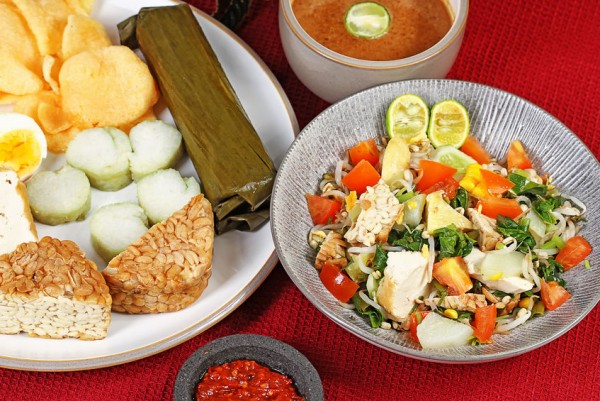 Image: Ismed Hasibuan/123rf.com
Image: Ismed Hasibuan/123rf.com
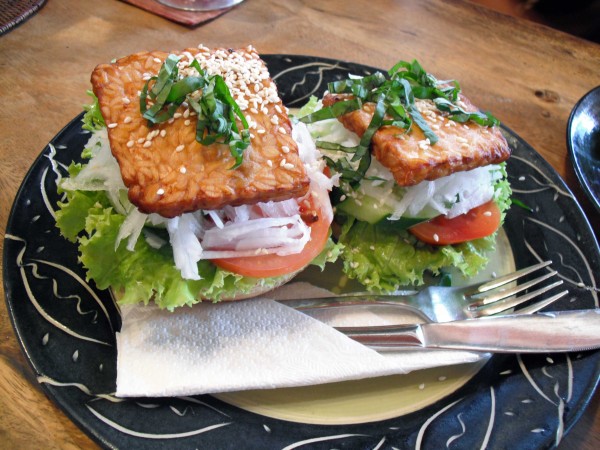 Image: Christian R/Wikimedia
Image: Christian R/Wikimedia
The World’s Healthiest Foods website describes tempe as a very good source of manganese, copper, and fiber. It is also a good source of phosphorus, vitamin B2, and magnesium. In-Depth Nutritional Profile for tempe shows that it has over 80 nutrients.
As cited by Nordic Food Lab, tempe is a good example of a fermented food whose transformation is advantageous not primarily for preservation purposes, but rather for the increased nutritional properties of the final product.
Last weekend we had the rare opportunity to participate in a tempe workshop organized by Jakarta Ashtanga Yoga Sala, a yoga studio that promotes healthy diet as one of Yoga principles.
Microo, Purveyor of Healthy Food
A Mother-daughter duo, Amalia and Annisa Hanan from Yogyakarta led the interactive and informative workshop
Amaliah works with local farmers in Yogyakarta villages to preserve the variety of Indonesian natives edible plants and improves their quality. Her research interest is on the efforts of creating quality local food from the ingredients, process, products and marketing.
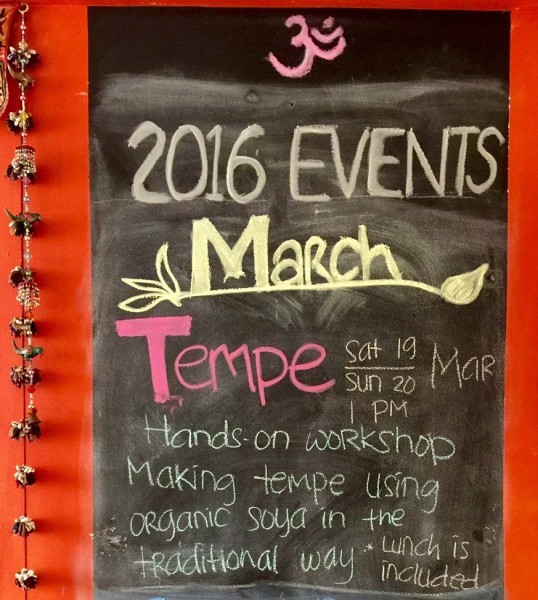
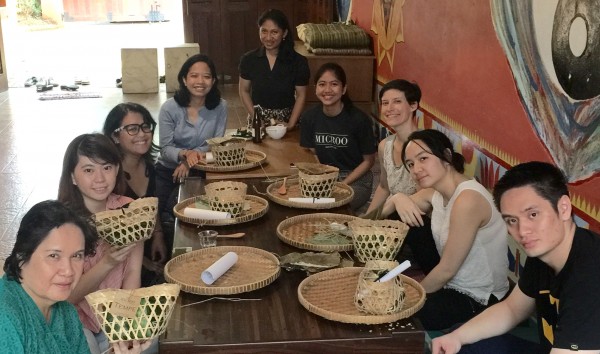
Annisa Hanan, her daughter, is a student who loves sports and gardening. She is a food enthusiast who founded Microo and works with small-scale women producers of tempe in rural areas, assisting them to get better price for their products to improve the local economy.
A healthy vegetarian lunch proceeded the workshop with a selection of tempe dishes, icluding tempe made from black soybeans, fresh vegetable soup and steamed vegetables with sambal tumpang dressing. The main ingredient of sambal tumpang is decayed tempe, cooked with chili, onion, salt, and other spices.
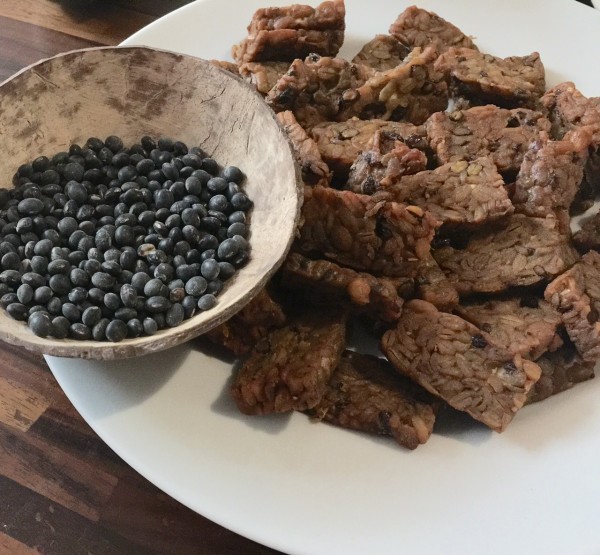
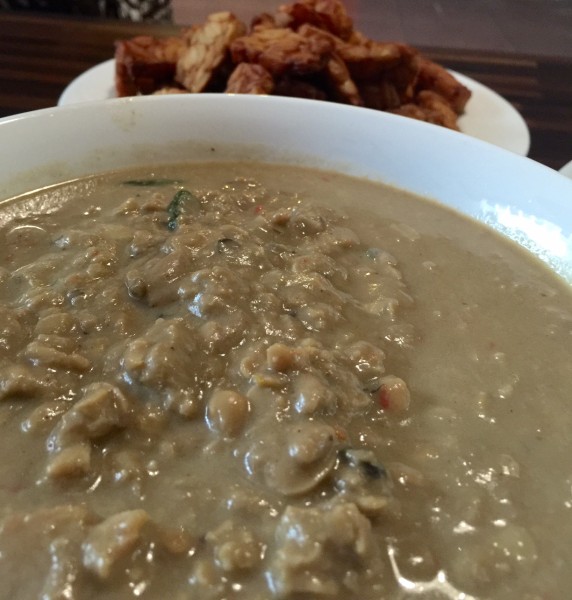
A short video clip followed to give participants information on the history of tempe, the types of traditional tempe and how to make one.
Tempe experts Mary Astuti in a book entitled Bunga Rampai Tempe Indonesia (Anthology of Indonesia’s Tempe) writes that tempe can not be separated from soybeans, its main ingredient. The written record on soybeans in Indonesia dates back to the 12th or 13th century.
Amaliah showed us a round tray full of small containers filled with several types of local beans as the raw materials of tempe, comparing them to GMO soybeans.
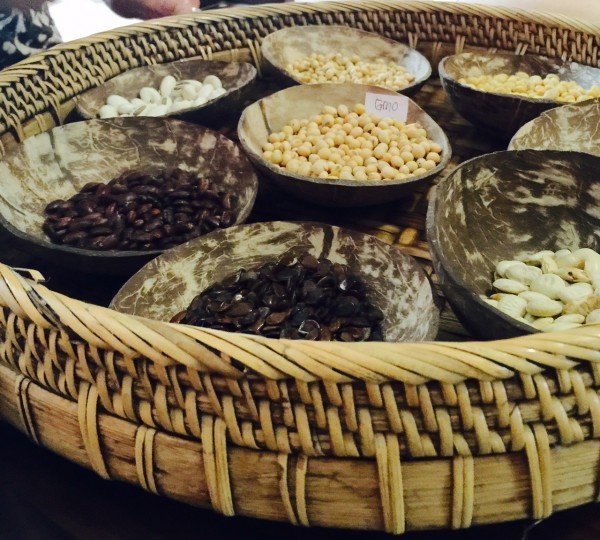
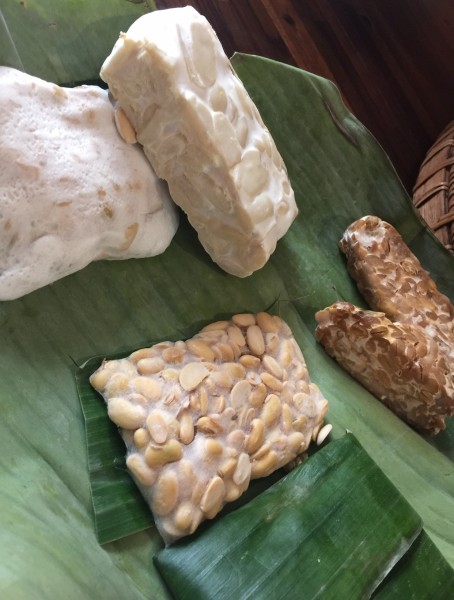
Tempe Varieties
There are in fact varieties of tempe and they are not all made from soybeans. Ayah Bunda, a Parenting Magazine in Indonesia published an article on popular tempe assortment.
Tempe Kedelai is made from soy beans fermented with a fungus called Rhizopus oligosporus as a starter culture. Tempe gembus uses tofu waste, from a tofu making process. Tempe Benguk is made from velvet beans that needs an extra effort in the making because tempe makers have to eliminate the cyanide content in the beans.
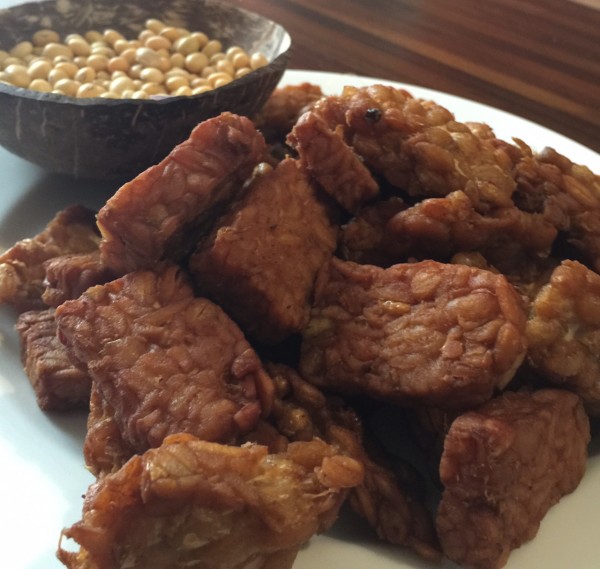
Tempe Lamtoro uses legumes as its main ingredient with its taste similar to tempe made from soybeans. Tempe Kecipir is quite unique as it is made from winged beans, abundant in the Eastern part of Indonesia.
In theory, any bean can be fermented to make tempe. Examples are Tempe Kacang Hijau, mungbean tempe, and Tempe Kacang Merah, redbean tempe.
Tempe Step by Step
While we do not yet have access to the wonderful video clip shown at the Tempe Making Workshop, this short videoclip, produced by Microo. gives a clear step by step guidance of tempe making
Annisa presented each participant with a scroll containing information on how to make tempe. In essence these are the steps of making tempe kedelai:
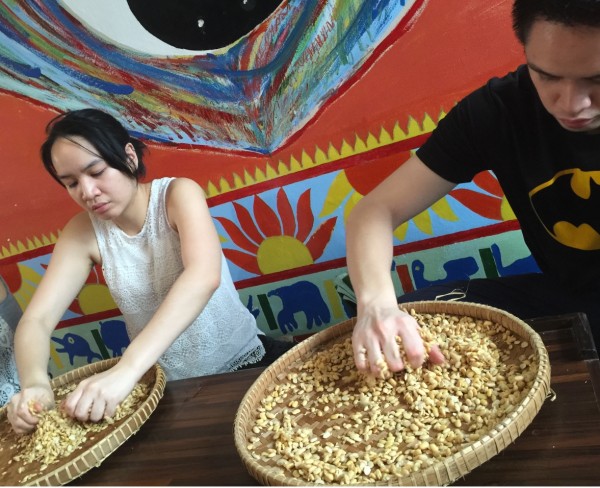
1) Clean soybeans from dirts and stones. 2) Boil the beans in fresh water. 3) Remove the outer skin of the soybeans. 4) Soak for 36 hours, changing the water every 18 hours. 5) Steam the soybeans for about one hour, drain and dry. 6) Add an inoculum (tempe starter) for fermentation. Traditional tempe makers use hisbiscus leaves that have fungus on the surface.. 7) Wrap the Beans in banana leaves to get B12. If there is no banana leaves, use punctured plastic bags. Banana leaves, however, is the deciding factor of B12 content. 8) Cover the packages with cloth or newspaper to retain the heat. 9) You will have the tempe ready in less than 48 hours when mycelium already connected the beans.
The Tempe Making Workshop ran for a few hours where we did most of the steps outlined above. The steps look simple, but it is a tedious process that requires calmness so that we can make a good tempe.
At home, less than 48 hours after the workshop, we anxiously checked our tempe packages and were quite proud of the results.
Thanks to Amaliah and Annisa Hanan, we can now make our own healthy food, and appreciate tempe makers more as they are doing a lot of work to produce healthy food for meager income.
To arrange for tempe workshop, to arrange for a tempe tour or to buy Microo products in support of sustainable local farming, please communicate through email : microorganisme15@gmail.co or instagram @microo_
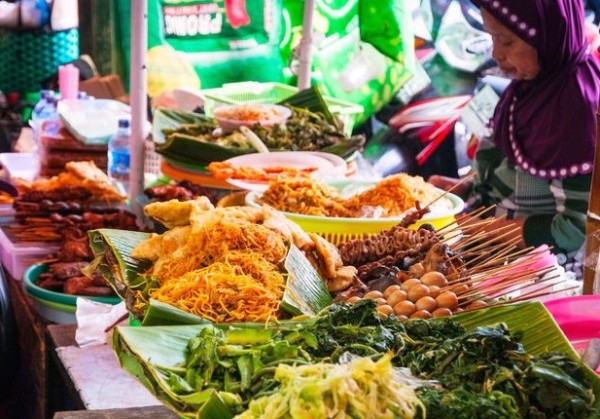 Image: Dinozzaver/123rf.com
Image: Dinozzaver/123rf.com
------------------
Text: Amanda Niode. Cover Image: Cokemomo/123rf.com. All other images by Omar Niode Foundation, unless otherwise noted.